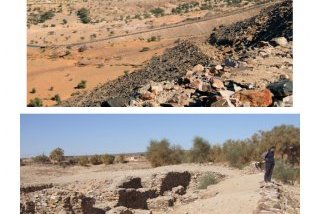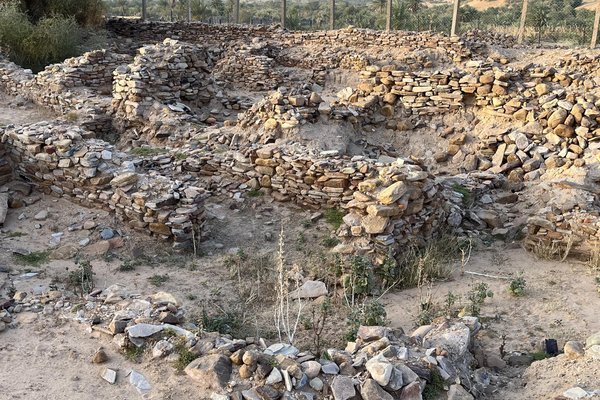Mauritania
Paysage culturel d'Azougui
Site Info
Official Information
- Full Name
- Paysage culturel d'Azougui (ID: 1545)
- Country
- Mauritania
- Status
-
On tentative list 2001
Site history
History of Paysage culturel d'Azougui
- 2005: Deferred
- Needs substantially revised nomination
- 2001: Added to Tentative List
- Added to tentative list
- Type
- Cultural
- Criteria
Links
- UNESCO
- whc.unesco.org
All Links
UNESCO.org
- whc.unesco.org — whc.unesco.org
Community Information
- Community Category
- Cultural Landscape: Continuing
Travel Information
Recent Connections
News
No news.
Community Reviews
Show full reviews
Azougui is now a small village at the bottom of a valley just outside the city of Atar. Here lies a modest archaeological site dating back to the early Almohavids (11th century). It seems to be on the itinerary of every tour covering Mauritania, so we made a quick visit as well in the late afternoon. Those who later became known as the Almohavids chose a very fine setting, at the foot of the mountains. Their date palm groves still dominate the landscape.
The main site lies within a walled and gated compound, of which the key can be obtained in the white building across the street. So it is secured and not smeared by litter or graffiti. It’s about the size of a football field, filled with stone foundations of several structures (some may have collapsed fairly recently, the ICOMOS evaluation says that there were still upstanding remains of the fortress visible in the 1950s). Its main issue however is that excavations seem to have stopped at a certain moment and there are no plans to resume them (No Money). So there’s no interpretation on site and there seems so much more potential to be uncovered or restored.
The Mauritanian version of its history (also told by our guide) is that the empire of the Almohavids hails from here. They controlled a territory stretching from Spain to Senegal and were responsible for the Islamisation of the western Maghreb. The Mauritanian proto-Almohavids returned to this fortress/palace at Azougui …
Keep reading 0 comments
Having visited Azougui in 2007 without noticing anything particularly “special” about the place it was a surprise to discover that it had in fact been nominated in 2005. The second surprise was to discover that it had only been “deferred”!
The “Paysage Culturel d’Azougui" consists of an oasis of date palms at the bottom of a steep escarpment, a few kms north of the regional capital of Atar up on the Adrar Plateau (Photo 1) We went there because of its stated importance in the history of the Almoravid dynasty. Now, all those N African “id” dynasties are a problem aren’t they! – Idrissids, Zirids, Hammamids etc etc. Among them were the Almoravids. Around 1050 this Berber dynasty “emerged” from the Sahara, driven by Islamic puritanical reform ideals and, remarkably quickly, conquered Morocco, the Magreb towards Algiers, much of Iberia and, to the south, took land from the Empire of Ghana . From this peak in 1120 however they were quickly conquered by the Almohads and had been replaced by 1160. Around 1062 they established Marrakesh as their capital. It was this dynasty’s expansion which El Cid fought. Their architectural style is considered significant for its Puritanism and rejection of lavish decoration. Their long term significance is claimed to include the Islamisation of the Maghreb and the Western Sahara (though this is disputed).
But of all this, very little remained in Azougui!! The Mauritanians are no doubt proud of “their” dynasty and understandably revere Azougui …
Keep reading 0 comments
